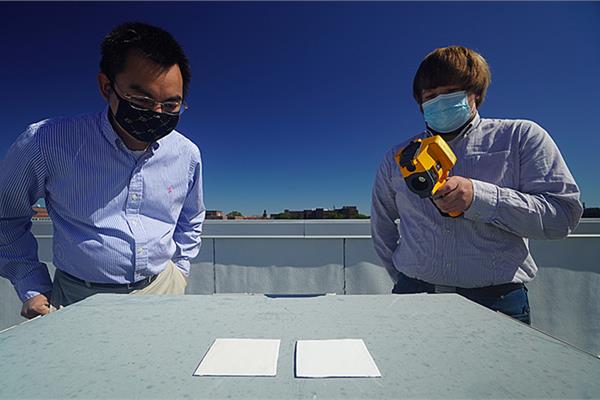
Engineers from Purdue University created a white paint that can keep surfaces up to 18 degrees Fahrenheit cooler than their surroundings, without consuming energy.
According to Purdue University researchers, an innovative white paint could replace the need for air conditioning by absorbing almost no solar energy and sending heat away from the building. This paint is not only capable of sending heat away from a surface, but also from Earth into deep space where heat travels indefinitely at the speed of light. This prevents heat from being trapped in the atmosphere and does not contribute to global warming.
Furthermore, with this technology, earth's surface would actually become cooler if the paint were applied to a variety of surfaces including roads, roofs and cars around the world, the researchers said.
"We are not moving heat from the surface to the atmosphere. We are just dumping it all out into the universe, which is an infinite heat sink," said Xiangyu Li, a postdoctoral researcher at the Massachusetts Institute of Technology who worked on this project as a Ph.D. student in Ruan's lab.
The development process
The researchers said - based on tests carried out - that compared with commercial white paint, the paint they developed can maintain a lower temperature under direct sunlight and reflect more ultraviolet rays.
The "heat rejecting paints " currently on the market reflect only 80%-90% of sunlight and cannot reach temperatures below the surrounding environment. Instead, the white paint created by Purdue University researchers reflects 95.5% sunlight and efficiently radiates infrared heat.
To develop this formulation, the researchers drew on attempts dating back to the 1970s to develop radiative cooling paints as a viable alternative to traditional air conditioners. They considered over 100 different material combinations, narrowed them down to 10 and tested about 50 different formulations for each material. Definitive formulation is made of calcium carbonate, an earth-abundant compound commonly found in rocks and seashells. This compound, used as the paint's filler, allowed the formulation to behave essentially the same as commercial white paint but with greatly enhanced cooling properties.
The researchers are working on developing other paint colours that could have cooling benefits.